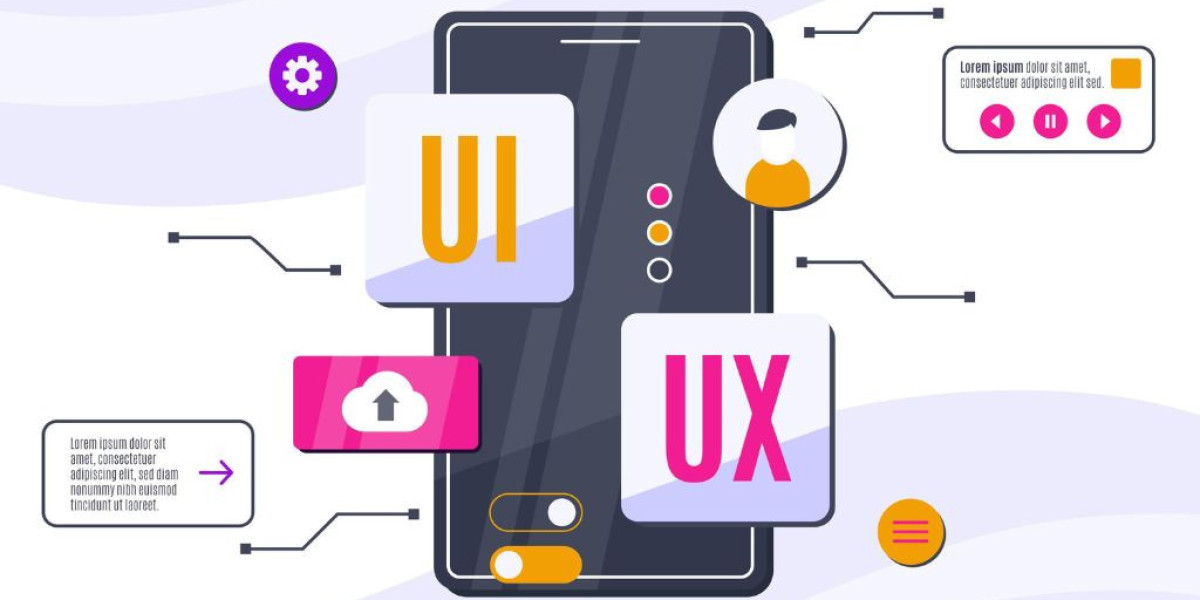As mobile apps continue to evolve, we're seeing the rise of 'super apps' that bring together multiple different functionality areas under one roof. These multi-service apps aim to be users' centralized hub for a variety of tasks. However, designing an app that fulfills diverse needs across several services poses significant UI/UX challenges.
In this article, we'll explore 11 key challenges facing designers of multi-service apps, with strategies for overcoming each one. By understanding these challenges, designers can build versatile yet intuitive experiences that truly serve users well.
Challenge 1: Defining the Information Architecture
One of the first obstacles is determining how to logically arrange and group the different services within an app. With such a wide scope of potential functionality, how do you ensure each individual service is discoverable while also maintaining a cohesive overall structure?
The starting point is understanding user needs and patterns of use. Conducting user research to map how people currently accomplish various tasks can reveal natural relationships between services. Grouping services that typically go hand-in-hand can streamline workflows.
It's also important to consider different types of users - whether they're frequent, occasional, or new. Frequent users may appreciate services organized categorically (e.g. Finance, Shopping), while occasional users need intuitive labels. And new users need navigability balanced with simplicity to avoid overwhelm.
Once logical categories emerge, prioritize putting the primary or most used service prominently upfront. But also ensure less prominent services remain discoverable, such as within a dedicated "More" section.
The information architecture then needs consistency across onboarding, navigation systems, app flows and account settings syncing. With a strong foundation, services can be intuitively explored and interconnected.
Challenge 2: Designing Intuitive Navigation
Closely related is defining navigation patterns that enable simple and intuitive movement between services. Multi-service apps introduce more complexity versus singular-purpose apps, so navigation is crucial for ease of use.
Common app drawer-style navigation should allow scanning and selection of all available services. But consider also progressive disclosure, where tapping a category expands to reveal its related services. This balances visibility with avoiding excessive options.
Use consistent navigation labels, placement of menus/buttons, and interaction patterns to cement intuitive understanding. Learn from navigation standards in other multipurpose platforms like desktop interfaces.
Tier services by importance too - less integral services can still be discoverable within an "Explore" section for example, de-emphasizing them from the core experience.
Finally, account for varying complexity levels across services. Deeply intricate tools may warrant their own unique navigation while simpler ones can follow core app patterns. Customization respects service uniqueness.
With navigation thoughtfully designed, users can smoothly flow between diverse functionality without friction points hindering their tasks. Visit: https://zipprr.com/gojek-clone/
Challenge 3: Onboarding and Tutorials
Educating users on the breadth of a multi-service app's offerings during onboarding/tutorials is another challenge. There's a lot to unpack, so how do you avoid overwhelming users yet still set them up for success?
Prioritize streamlining the core onboarding journey, focusing on 2-3 primary services to demonstrate immediate value. Subsequent services can then be introduced gradually through optional micro-tutorials.
Contextual, non-interruptive tutorials based on real user behaviors also work better than overwhelming info-dumps. For example, introducing a new service when the user performs a related action.
Experienced and new users also have different needs. Create separate customizable onboarding tracks - a quick 'hi speed' option for veterans, and an thorough guided tour for newcomers.
Help pages, explainer videos also enhance learnability without disrupting workflows. But ensure these education assets are engaging and respect users' time. The goal is simplicity above all else.
With sensitive onboarding and ongoing support, multi-service apps can initiate users painlessly into an expansive yet cohesive experience.
Challenge 4: Crafting an Intuitive Visual Hierarchy
When presenting many services together, one challenge lies in subtly influencing what users pay attention to first. Visual hierarchy principles come into play here for optimal focus and simplicity.
Hierarchically emphasize primary services by sizing, spacing, color or position. For example, placing most important services at eye-level dead-center of the homescreen. Position less critical services lower down or within dedicated sections.
Iconography also shapes visual hierarchy - ensure primary services have clear, distinct icons for scanning. Supplementary services can have more subtle icons. Combined with intentional sizing, this implies importance levels.
Segment services into logical graphical groups to declutter the information architecture. For example, place Tools services together and Shopping services together. But maintain consistency of interaction patterns throughout for familiarity.
Test various placements through prototyping to understand what really stands out versus blends in based on real user behaviors. Adjust hierarchy based on these insights for maximum clarity and ease of comprehension.
Strategic visual hierarchy alleviates analysis paralysis for users by guiding focus towards what matters most in each context.
Challenge 5: Enabling Smooth Inter-Service Communication
Another hurdle lies in ensuring users can transition between services fluidly without friction points hindering task completion. Services should interconnect rather than feel isolated islands.
Consider how to persist user context when switching between services. For example, passing the user's profile details auto-populates forms in other services for convenience.
Services launching from within other services should re-enter at the relevant point, maintaining workflow momentum. Back or side menus can then return users smoothly to their originating context.
Where appropriate, share data models between connected services for live updates. For instance, cart items populated across Shopping and Delivery services. Or synchronized notes between Writing and To-Do services.
Finally, optimize for consistent performance across services. Laggy inter-app transitions damage usability - prioritize responsive handoffs without janky behavior impairing the experience.
With these strategies, users stay in-flow as they leverage the app's full capabilities without disruption between interconnected pieces.
Challenge 6: Ensuring Responsiveness
Responsiveness becomes paramount at the macro scale of a multi-service app, with potential for dozens of moving parts interacting simultaneously. Delays caused by taxing the system undermine the entire experience.
From the start, optimize for lean code through modularization, parallelization, and limiting redundant operations. Profile services individually and together to understand bottlenecks.
Lazy-load non-critical services to minimize memory footprint. Consider service worker caching to serve static assets quickly from device storage.
Progressive web app techniques also enhance responsiveness -building with REST APIs facilitates cost-effective scaling. Service workers cache repeating requests.
Prioritize visible, real-time UI updates over computationally expensive background operations. Leverage animations to mask loading states where needed.
In addition, separate processor-intensive processes like image processing to worker threads. Limit resource-draining capabilities like Location on lower-powered devices.
Responsive performance, more than flashiness, is key to user satisfaction across such complex experiences.
Challenge 7: Developing a Cohesive Brand Identity
With numerous independent capabilities, developing an overarching brand identity uniting the experience poses a challenge. Users need to understand the app's value at a glance.
Start by defining the core value proposition - what user needs does it fulfill? How does the convergence of services create outsized value? Communicate this succinctly.
Maintain consistency in visual elements like logo, color palette, typography across all touchpoints to cement a singular impression. But also allow brands room to stand out within standards.
Marketing should highlight flagship integrations showcasing the platform's full potential through real user scenarios. Target communications to needs rather than isolated products.
Gradually introducing new services under the unified brand anchors them as valuable extensions, not random additions.
Finally, balance interdependence with autonomy - allow services to prosper individually while clearly situated under an overarching identity.
Cohesive branding gives users necessary context to perceive diverse parts as a powerful unified whole.
Challenge 8: Ensuring Accessibility
Given complexity, accessibility risks becoming an afterthought for multi-service apps. But to be inclusive, it requires thoughtful consideration from the start.
Adopt design systems with built-in accessibility best practices for elements like color contrast, navigation, and labels. Leverage tools like lighthouse for auditing and compliance.
Cater accessible solutions for varying disabilities across services - text alternatives for visual impairment, functional despite motor/cognitive limitations, and so on. Obtain expert feedback.
Balance needs of screen readers, keyboard-only and other assistive technologies across the diverse feature landscape. Segment complex interfaces sensitively.
Finally, apply personalized accessibility profiles allowing preferences to carry throughout the app in a consistent, customizable manner. Sync profiles seamlessly.
With careful thought and stakeholder input, a versatile app can meet the needs of all.
Challenge 9: Enabling Personalization
Personalization is key for intuitive, long-term usability. But how do you apply and sync customized settings consistently across several independent services?
Establish a centralized system to store, manage and apply profile data - like names, preferences, permissions and access tokens. Consider privacy implications carefully.
Services should reference this single source of truth, with profiles automatically applied on launch. Changes apply globally.
Challenge 10: Thorough Testing and Continuous Improvement
Thorough testing poses a unique challenge at the enormous scale of possibilities within a multi-service app. It's impossible to anticipate every usage scenario.
During development, leverage technique like feature flagging to rollout new services incrementally, gaining feedback at a controlled pace. Focus groups provide qualitative feedback.
For testing, map out and methodically work through core user journeys while also fuzz testing obscure edge cases. Constantly expand test coverage.
Once launched, analytics and Bugsnag tools uncover real-world usage patterns and error reports. Server logs reveal bottlenecks. Actively solicit feedback too.
Iterate based on learnings - improve underperforming features, consolidate duplicative ones, refine flows. Continually evaluate how to better integrate services based on organic adoption.
As the app matures, pivot neglected services into new opportunities or sunset as needed. Nurture services that resonate into flagship experiences.
With an ongoing testing mindset, address issues proactively and sharpen the experience edge continuously for evolving user needs.
Conclusion
In conclusion, designing successful multi-service apps requires overcoming many UX challenges. With user needs as the top priority, thoughtful solutions can craft intuitive experiences that unite discrete functionality into a cohesive whole, streamlining how people accomplish varied goals through their mobile devices.







